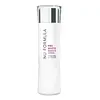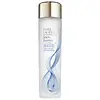What's inside
What's inside
 Key Ingredients
Key Ingredients

 Benefits
Benefits

 Concerns
Concerns

No concerns
 Ingredients Side-by-side
Ingredients Side-by-side

Water
Skin ConditioningButylene Glycol
HumectantPropylene Glycol
HumectantPropanediol
SolventPEG/PPG-17/6 Copolymer
SolventPhenoxyethanol
PreservativeGlycerin
HumectantTrehalose
HumectantPolysorbate 20
EmulsifyingChlorphenesin
AntimicrobialCarbomer
Emulsion StabilisingNiacinamide
SmoothingDisodium EDTA
Sodium Hydroxide
BufferingBenzotriazolyl Dodecyl P-Cresol
UV AbsorberTris(Tetramethylhydroxypiperidinol) Citrate
UV Absorber1,2-Hexanediol
Skin ConditioningSodium Citrate
Buffering3-O-Ethyl Ascorbic Acid
Skin ConditioningTranexamic Acid
AstringentPanthenol
Skin ConditioningCystoseira Tamariscifolia Extract
Skin ConditioningCitrus Reticulata Peel Extract
Skin ConditioningXanthan Gum
EmulsifyingZinc PCA
HumectantTocopheryl Acetate
AntioxidantAllantoin
Skin ConditioningAlpha-Arbutin
AntioxidantCentella Asiatica Extract
CleansingAloe Barbadensis Leaf Extract
EmollientEthylhexylglycerin
Skin ConditioningCaprylyl Glycol
EmollientLeontopodium Alpinum Extract
Skin ConditioningGlycyrrhiza Glabra Root Extract
BleachingHibiscus Sabdariffa Flower Extract
Skin ConditioningGlucose
HumectantMagnesium PCA
HumectantSodium Lactate
BufferingSodium Hyaluronate
HumectantCopper Tripeptide-1
Skin ConditioningGlutathione
Potassium Sorbate
PreservativeSodium Benzoate
MaskingChondrus Crispus Extract
Skin ConditioningSerine
MaskingSucrose
HumectantUrea
BufferingGlycine
BufferingCalcium Chloride
AstringentPotassium Hydroxide
BufferingOrnithine
Skin ConditioningMaris Sal
Skin ConditioningAlanine
MaskingMagnesium Chloride
Hydroxypropyltrimonium Hyaluronate
Threonine
Histidine
HumectantAspartic Acid
MaskingValine
MaskingProline
Skin ConditioningDipotassium Phosphate
BufferingLysine
Skin ConditioningLeucine
Skin ConditioningTyrosine
MaskingIsoleucine
Skin ConditioningMagnesium Citrate
Skin ConditioningGlucosamine Hcl
Phenylalanine
MaskingGlutamic Acid
HumectantArginine
Masking1-Methylhydantoin-2-Imide
Skin ConditioningAsparagine
MaskingCitrulline
Skin ConditioningUric Acid
BufferingMethionine
Skin ConditioningTaurine
BufferingHydrolyzed Hyaluronic Acid
HumectantSodium Acetylated Hyaluronate
HumectantTryptophan
MaskingFormic Acid
PreservativeAmmonia
BufferingGlutamine
Skin ConditioningCysteine
AntioxidantHyaluronic Acid
HumectantSodium Hyaluronate Crosspolymer
HumectantHydrolyzed Sodium Hyaluronate
Skin ConditioningPotassium Hyaluronate
Skin ConditioningWater, Butylene Glycol, Propylene Glycol, Propanediol, PEG/PPG-17/6 Copolymer, Phenoxyethanol, Glycerin, Trehalose, Polysorbate 20, Chlorphenesin, Carbomer, Niacinamide, Disodium EDTA, Sodium Hydroxide, Benzotriazolyl Dodecyl P-Cresol, Tris(Tetramethylhydroxypiperidinol) Citrate, 1,2-Hexanediol, Sodium Citrate, 3-O-Ethyl Ascorbic Acid, Tranexamic Acid, Panthenol, Cystoseira Tamariscifolia Extract, Citrus Reticulata Peel Extract, Xanthan Gum, Zinc PCA, Tocopheryl Acetate, Allantoin, Alpha-Arbutin, Centella Asiatica Extract, Aloe Barbadensis Leaf Extract, Ethylhexylglycerin, Caprylyl Glycol, Leontopodium Alpinum Extract, Glycyrrhiza Glabra Root Extract, Hibiscus Sabdariffa Flower Extract, Glucose, Magnesium PCA, Sodium Lactate, Sodium Hyaluronate, Copper Tripeptide-1, Glutathione, Potassium Sorbate, Sodium Benzoate, Chondrus Crispus Extract, Serine, Sucrose, Urea, Glycine, Calcium Chloride, Potassium Hydroxide, Ornithine, Maris Sal, Alanine, Magnesium Chloride, Hydroxypropyltrimonium Hyaluronate, Threonine, Histidine, Aspartic Acid, Valine, Proline, Dipotassium Phosphate, Lysine, Leucine, Tyrosine, Isoleucine, Magnesium Citrate, Glucosamine Hcl, Phenylalanine, Glutamic Acid, Arginine, 1-Methylhydantoin-2-Imide, Asparagine, Citrulline, Uric Acid, Methionine, Taurine, Hydrolyzed Hyaluronic Acid, Sodium Acetylated Hyaluronate, Tryptophan, Formic Acid, Ammonia, Glutamine, Cysteine, Hyaluronic Acid, Sodium Hyaluronate Crosspolymer, Hydrolyzed Sodium Hyaluronate, Potassium Hyaluronate
Water
Skin ConditioningBifida Ferment Lysate
Skin ConditioningPropanediol
SolventPEG-75
HumectantLactobacillus Ferment
Skin ConditioningAcetyl Hexapeptide-8
HumectantAcetyl Glucosamine
Skin ConditioningSodium Hyaluronate
HumectantAnthemis Nobilis Flower Extract
MaskingCaffeine
Skin ConditioningDipotassium Glycyrrhizate
HumectantHydrolyzed Rice Extract
Skin ConditioningBetaine
HumectantMaltodextrin
AbsorbentCarbomer
Emulsion StabilisingTromethamine
BufferingCitric Acid
BufferingTrehalose
HumectantButylene Glycol
HumectantCaprylyl Glycol
EmollientPPG-5-Ceteth-20
EmulsifyingPentylene Glycol
Skin ConditioningDisodium EDTA
Sodium Citrate
BufferingPhenoxyethanol
PreservativePotassium Sorbate
PreservativeWater, Bifida Ferment Lysate, Propanediol, PEG-75, Lactobacillus Ferment, Acetyl Hexapeptide-8, Acetyl Glucosamine, Sodium Hyaluronate, Anthemis Nobilis Flower Extract, Caffeine, Dipotassium Glycyrrhizate, Hydrolyzed Rice Extract, Betaine, Maltodextrin, Carbomer, Tromethamine, Citric Acid, Trehalose, Butylene Glycol, Caprylyl Glycol, PPG-5-Ceteth-20, Pentylene Glycol, Disodium EDTA, Sodium Citrate, Phenoxyethanol, Potassium Sorbate
 Reviews
Reviews

Ingredients Explained
These ingredients are found in both products.
Ingredients higher up in an ingredient list are typically present in a larger amount.
Butylene Glycol (or BG) is used within cosmetic products for a few different reasons:
Overall, Butylene Glycol is a safe and well-rounded ingredient that works well with other ingredients.
Though this ingredient works well with most skin types, some people with sensitive skin may experience a reaction such as allergic rashes, closed comedones, or itchiness.
Learn more about Butylene GlycolCaprylyl Glycol is a humectant and emollient, meaning it attracts and preserves moisture.
It is a common ingredient in many products, especially those designed to hydrate skin. The primary benefits are retaining moisture, skin softening, and promoting a healthy skin barrier.
Though Caprylyl Glycol is an alcohol derived from fatty acids, it is not the kind that can dry out skin.
This ingredient is also used as a preservative to extend the life of products. It has slight antimicrobial properties.
Learn more about Caprylyl GlycolCarbomer is a polymer of acrylic acid. Its main role is to create a gel consistency.
A high amount of carbomer can cause pilling or balling up of products. Don't worry, most products contain 1% or less of carbomer.
Disodium EDTA plays a role in making products more stable by aiding other preservatives.
It is a chelating agent, meaning it neutralizes metal ions that may be found in a product.
Disodium EDTA is a salt of edetic acid and is found to be safe in cosmetic ingredients.
Learn more about Disodium EDTAPhenoxyethanol is a preservative that has germicide, antimicrobial, and aromatic properties. Studies show that phenoxyethanol can prevent microbial growth. By itself, it has a scent that is similar to that of a rose.
It's often used in formulations along with Caprylyl Glycol to preserve the shelf life of products.
Potassium Sorbate is a preservative used to prevent yeast and mold in products. It is commonly found in both cosmetic and food products.
This ingredient comes from potassium salt derived from sorbic acid. Sorbic acid is a natural antibiotic and effective against fungus.
Both potassium sorbate and sorbic acid can be found in baked goods, cheeses, dried meats, dried fruit, ice cream, pickles, wine, yogurt, and more.
You'll often find this ingredient used with other preservatives.
Learn more about Potassium SorbatePropanediol is an all-star ingredient. It softens, hydrates, and smooths the skin.
It’s often used to:
Propanediol is not likely to cause sensitivity and considered safe to use. It is derived from corn or petroleum with a clear color and no scent.
Learn more about PropanediolSodium Citrate is the sodium salts of citric acid. In skincare, it is used to alter pH levels and acts as a preservative.
Its main functions are to maintain the pH of a product and neutralize metal ions.
The acidity of our skin is maintained by our glands and skin biome; normal pH level of skin is slightly acidic (~4.75-5.5).
Being slightly acidic allows our skin to create an "acid mantle". This acid mantle is a thin barrier that protects our skin from bacteria and contaminants.
Learn more about Sodium CitrateSodium Hyaluronate is hyaluronic acid's salt form. It is commonly derived from the sodium salt of hyaluronic acid.
Like hyaluronic acid, it is great at holding water and acts as a humectant. This makes it a great skin hydrating ingredient.
Sodium Hyaluronate is naturally occurring in our bodies and is mostly found in eye fluid and joints.
These are some other common types of Hyaluronic Acid:
Learn more about Sodium HyaluronateTrehalose is a disaccharide made of two glucose molecules (glucose is sugar!). Trehalose is used to help moisturize skin. It also has antioxidant properties.
As a humectant, trehalose helps draw moisture from the air to your skin. This helps keep your skin hydrated.
Due to its antioxidant properties, trehalose may help with signs of aging. Antioxidants help fight free-radical molecules, unstable molecules that may damage your skin.
In medicine, trehalose and hyaluronic acid are used to help treat dry eyes.
Some animals, plants, and bacteria create trehalose as a source of energy to survive freeze or lack of water.
Learn more about TrehaloseWater. It's the most common cosmetic ingredient of all. You'll usually see it at the top of ingredient lists, meaning that it makes up the largest part of the product.
So why is it so popular? Water most often acts as a solvent - this means that it helps dissolve other ingredients into the formulation.
You'll also recognize water as that liquid we all need to stay alive. If you see this, drink a glass of water. Stay hydrated!
Learn more about Water